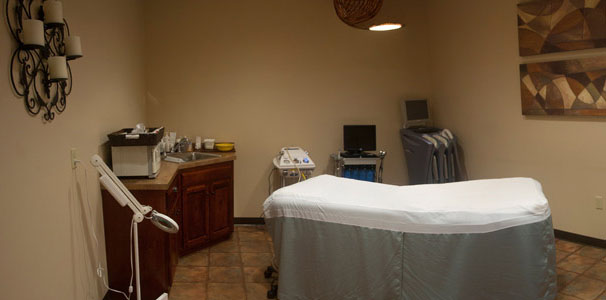
How we treat unwanted hair
Laser Hair Reduction
A quick and pain free way to permanently reduce unwanted hair from your legs, back, face, bikini, and other areas of your body where unwanted hair is a problem. *Our package option saves you over 15%.*With package purchase receive 50% off touch-up treatments.

Frequently Asked Questions
How does laser hair removal work?
The laser emits a very specific beam of light at a wavelength that is targeted at melanin in the hair and/or at the follicle growth center (called the hair bulb). Melanin is the material that gives color to our hair and skin. The laser beam passes through the skin and is absorbed by the melanin in the hair follicle. Therefore, the ideal candidate for this procedure has hair that is darker than her skin color. If the skin and hair color are too similar, it confuses some lasers. Darker skin needs “long-wave” hair-removal lasers like the YAG laser. They are safer if you have darker skin because they won’t “burn” the skin trying to get rid of the hair.
Why do I need a series of treatments?
At any given time, a certain percentage of hairs are in the “resting” phase, rather than a growth phase. The laser will not be effective on those resting hairs, which is why, on average, five treatments are necessary in each area to achieve maximum results. More treatments can be done as soon as further hair growth appears. Due to the variation in the number of hairs in the resting phase, certain parts of the body will respond more rapidly whereas others might take much longer to show effects. For example, the face usually responds more slowly than the bikini line. Remember that single treatments will not be effective. You need a series of about 5 treatments in order to reach all hairs in their various growth phases.
Do the treatments hurt, and how long will they take?
There may be mild discomfort during the treatment, but most patients tolerate laser hair removal very easily. For discomfort during your treatment, some patients elect to get a topical numbing cream which you apply before a treatment (Dr. Concannon can write the prescription for that prior to your treatment). If you are using the cream yourself, never apply numbing cream under saran wrap and never apply it to to an area larger than your hand.
How many treatments will I need?
After three to seven treatments initially, most women and men report that their expectations have been met, and the hair growth pattern is much, much less. In some areas, in addition to the decrease in the number of hairs, the hairs become very fine and light in color. No laser clinic should claim that all of the hairs will be permanently eradicated. Most patients will need a touch-up 1-4 times a year to maintain the improvement. Expect to need more treatments if you have any history of irregular periods, polycystic ovary disease, gray or white hairs, or a family history of excessive hair.
About 5 percent of patients are resistant to any type of hair removal laser. It is very important to have a realistic expectation regarding individual results of hair removal. No hair-removal system anywhere is “permanent.”
Do I need to do anything special before being treated?
Here are some general guidelines common to many laser hair removal treatments:
- Do not tan. Tanning of any type changes the laser settings and is the most common cause of blistering after laser hair removal. Do not use self-tanners one to two weeks before a treatment.
- No plucking, electrolysis, bleaching, waxing or depilatories should be performed at least two weeks prior to treatment. The hair must be present, a short stubble, and with its natural hair color in order to be treated effectively.
- Shaving is fine up until a few days before your treatment.
- All makeup and lotion should be removed prior to treatment.
- If antibiotics or any new medications have been started, inform your provider prior to treatment.
When is laser hair removal more difficult?
- If you have hormonal abnormalities like irregular periods or polycystic ovaries.
- If your hair is blonde or white.
- If it’s hard for you to make the time for an initial series of five or six monthly appointments.
- If you can’t get yourself to stop tanning
What are the medical or cosmetic side effects of laser hair reduction?
- Pain. Some people feel discomfort during the treatment. There may be a burning sensation, which lasts for an hour or two.
- Healing. There is always a slight possibility of developing a crust or blister. This is superficial and generally does not result in any scarring and is treated like a sunburn or any other superficial blister.
- Pigment changes. The treated area will probably heal without any pigment changes; however, there is always a chance that darker or lighter areas may occur. These are usually temporary and will fade within 1-6 months. Sun exposure must be avoided if a darker spot occurs, as that may intensify the hyperpigmentation. It is rare that a change is permanent.
- Scarring is very rare and it is important to follow all the post- treatment instructions carefully.
- Swelling may occur immediately after treatment, especially on the face. This is temporary and not harmful.
- Fragile skin. Skin that has been treated should be cared for gently for several days. It should not be rubbed.
- Bruising is rare. It will generally clear up within 4-10 days.
Additional Options
Waxing
Removes unwanted hair from brows, lip, bikini, legs, back and underarms. This is only effective temporarily, like shaving: it does not impact future hair growth.
Dermaplaning
Dermaplaning is a painless treatment that utilizes a special surgical blade to gently resurface and exfoliate the top layer of skin. This procedure removes dead skin cells and “peach fuzz”; resulting in healthier looking skin. This treatment is a wonderful option for patients who have sensitive skin or facial hair and are not candidates for laser hair removal. Dermaplaning can be combined with the Concannon Signature Clinical Facial or the HydraFacial.
